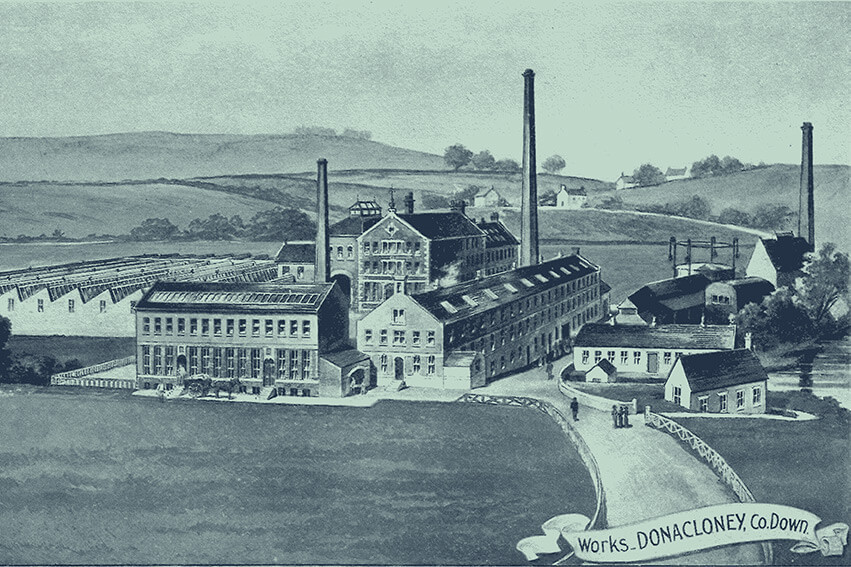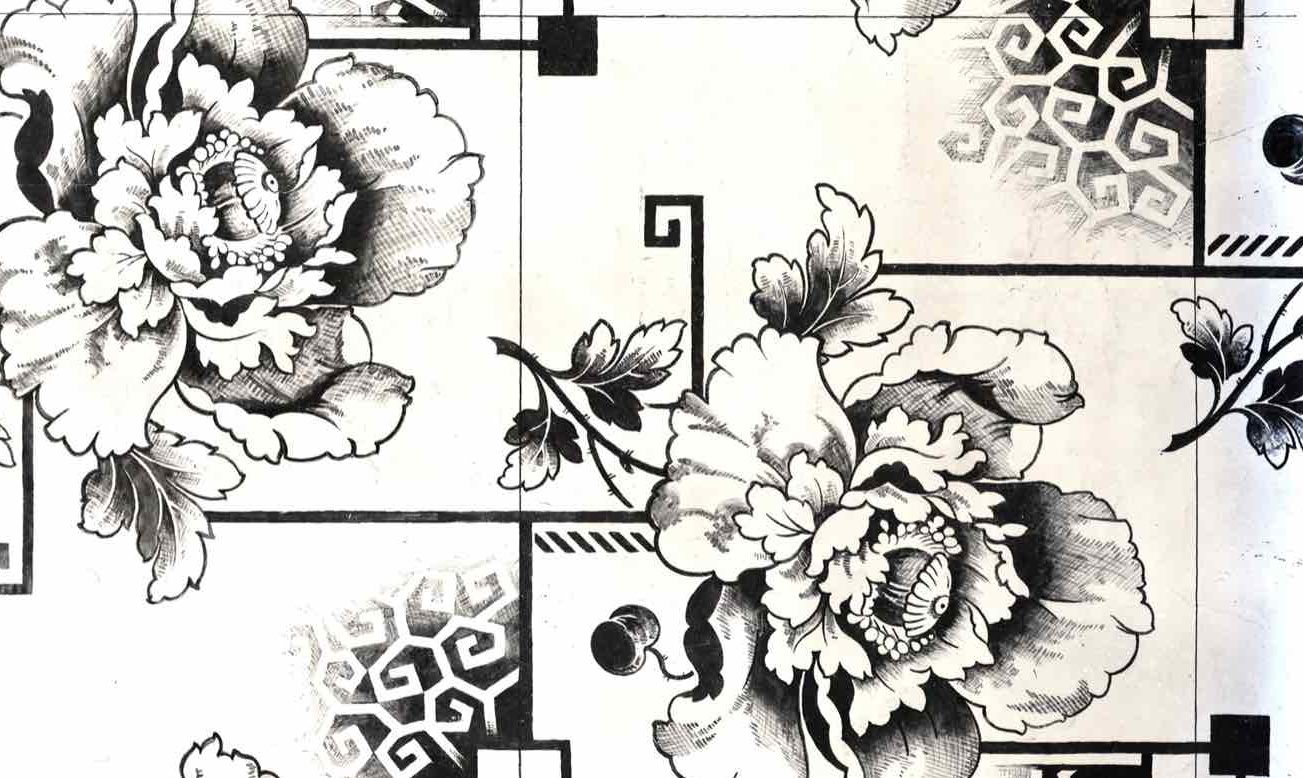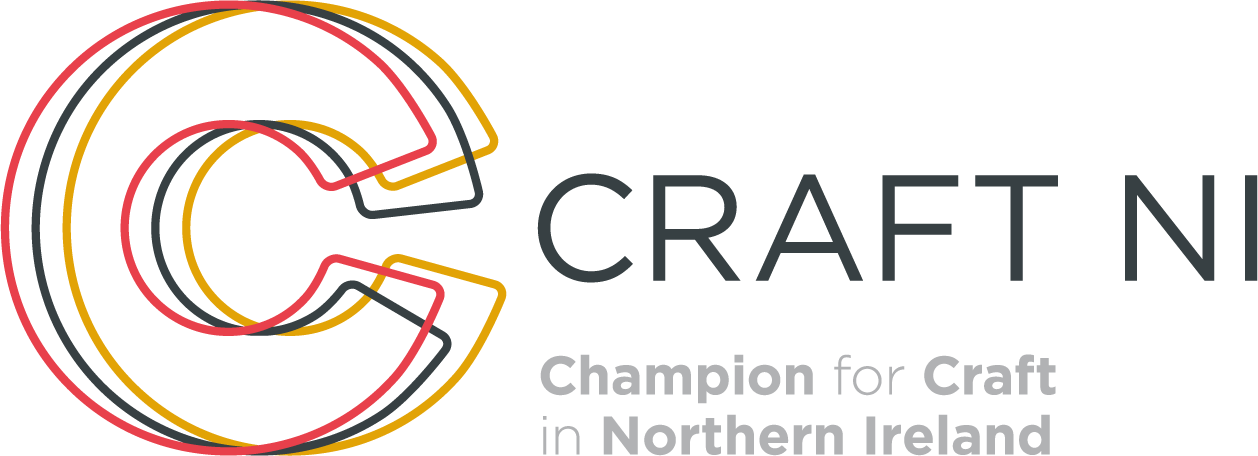Craft NI are delighted to present the ‘Shuttles and Shafts’ exhibition, a visual journey into the archives of one of Northern Ireland’s most prominent linen manufacturers and an insight into the work of the design partnership that have brought some of their classic patterns into the 21st century.
Previously suppliers to the Ritz and the White Star Line, glass design plates from the Ewart-Lidell Mill in Co. Down, were donated to Belfast School of Art. Senior Research Fellow, Trish Belford and Professor of Design Barbara Dass have preserved, catalogued and digitised the plates for future generations.
Their Heritage Lottery funded project Reviving William Liddell’s Damask Designs preserved a unique collection of 1600 photographic glass plates discovered in 2007 when the Ewart-Liddell linen factory at Donacloney, Co Down was dismantled. Their initial research was exhibited at Lisburn Museum during the inaugural NI Linen Biennale in 2018, and the resulting contemporary textiles are now in production at William Clark and Sons of Upperlands.
Exhibition Dates: Thursday, 14 October 2021 – Thursday, 11 November 2021 at Craft NI Gallery, 115-119 Royal Ave, Belfast.
Opening Times: Monday – Saturday, 10am – 5pm.
The exhibition aims to give the public a unique insight into the heyday of Irish Linen design and craftsmanship in the 1900s. The ambitious project is centred around these delicate photographic glass plates which illustrate the labour of a highly skilled workforce of designers, draftsmen and women and weavers working for the company during the years 1900s to 1970s.
Steeped in a fascinating period of Irish economic and design history, the exhibition brings into the spotlight the wealth and breadth of design work of the William Liddell Damask Weaving Company. Established in 1866, it was a prosperous business with an ideal position on the River Lagan which provided export routes to the rest of the world at a time when Belfast was the largest centre of linen production in the world. The company was famous for producing damask designs and was awarded contracts for luxurious liners including the Titanic and iconic stores including Harrods, House of Fraser and Bloomingdales in the U.S. The designs depicted on these plates were created by the company between the early 1900’s and 1970’s.

This modular exhibition designed by Belfast based Form Native is accompanied by a film documenting the project, a fascinating insight into the history of the designs, as well as the research used to bring the collection to life.




The initial stages of the project focused on the preservation of the glass plates, their digitization and classification for an open access digital archive.
The complete collection of digitised photographic plates have been arranged into four key classifications: logistics, hospitality, organisations and domestic patterns, these are beautifully illustrated in large format documents on show. You can read more about the fascinating ‘Reviving William Liddell’s Damask Designs’ project here.




Trish and Barbara also took an interest in finding a way to keep this wonderful design history alive in a contemporary setting. Looking back to look forward, Belford, in collaboration with William Clark and Sons of Upperlands, developed new prints and weaves in the form of the ‘The Donaghcloney collection’ – an uplifting range of decorative fabrics comprising vivid digital prints, new damask woven lace and co-ordinating screen prints that respects tradition while placing itself in a contemporary context. You can find details of new fabric ranges here.
INFORMATION ABOUT THE CREATORS
Patricia Belford: Senior Research Fellow, Ulster University. Main speciality Textile Print Design with emphasis on contemporary archive translation, has worked on a previous Leverhulme grant “The re discovery of shadow tissues” a practice based 2 year project working with historian Dr. Philip Sykas, delving into the unknown archives of Turnbull and Stockdale, Lancashire. The findings were reproduced as physical contemporary textiles plus a fully documented book, “The Beauty of Experiment” published in 2013. Now an invaluable teaching tool for print and weave students.
Barbara Dass: Professor of Design at Ulster University, with a specalism in weave will provide expertise in design translation of the damask plate images into new forms of Jacquard weaving. Dass has experience in working with communities and widening access projects in higher education.
Belford and Dass have previously collaborated on a hybrid print weave project, selected by Carlow Arts Festival to investigate and respond to the recently uncovered archives of Borris Lace. The output for this was a specially woven/printed body of work shown at Visual Arts Centre Carlow, June 2014.

